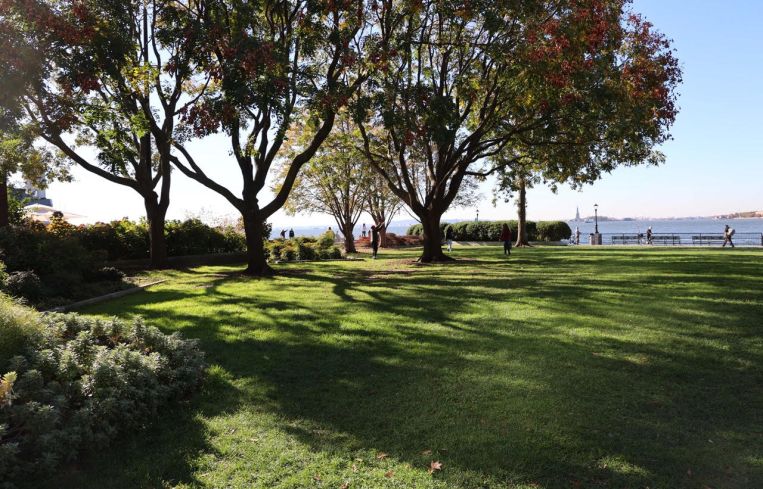Battery Park City Aims to Cut Emissions by Buying Electric Vehicles
By Celia Young April 1, 2022 11:55 am
reprints
The Battery Park City Authority (BPCA) plans on swapping its gas-guzzling park vehicles for electric ones, expanding its community compost system and redesigning its streets to prioritize pedestrians in an effort cut its carbon emissions by 81 percent by 2050, according to its carbon neutrality plan released on Friday.
The plan from the public-private authority charged with overseeing Battery Park City overviews how state initiatives — like decarbonizing the energy grid and requiring buildings to meet low emissions goals through Local Law 97 — will meet most of its goals, but local efforts — like a dog excrement compost program — will round out BPCA’s sustainability plans.
“We have to take action with a great sense of urgency,” BJ Jones, president and CEO of the BPCA, told Commercial Observer. “I am a firm believer that local action has a global impact. I hope that by doing our part, we can contribute to a larger effort to make the necessary changes to address the climate crisis.”
As part of its local efforts, Battery Park City — a 92-acre planned community below Chambers Street — plans to transition its fleet of park vehicles into electric vehicles, joining the Metropolitan Transportation Authority, which will swap its fleet of buses out for electric ones by 2040, further reducing emissions in the Battery Park area. By 2030, BPCA plans to have converted 35 percent of its curbside parking spaces into dedicated electric vehicle charging stations, according to the plan, which BPCA developed with consulting firm Buro Happold.
BPCA will also redesign its streets to encourage more residents to walk and bike by 2030 — though it hasn’t yet released specific designs. The organization is focusing on reducing gas-powered car usage, which was responsible for 51 percent of the community’s transportation-related carbon emissions in 2017, according to the plan.
The plan also focuses on reducing waste from residents, businesses and the local government. BPCA already implemented a dog waste composting program, first piloted in 2019, where residents can drop off their dog’s you-know-what at designated green tubs to be turned into compost along with other organic matter for the area’s parks. That helps fertilize the area’s parks, which represent about one-third of Battery Park City, Jones said.
BPCA plans on using a larger area for its composting program to help reduce methane emissions from landfill waste, which comes from the decomposition of food in garbage dumps, per the plan.
BPCA will consider several options to reduce water waste, like low-flow toilets and faucet heads for its residential and office buildings, though Jones said the organization was still looking at the different options for water management.
Under its emissions plan, BPCA hopes to be able to reduce its carbon emissions by 81 percent, and the public benefit corporation plans on purchasing carbon offsets — investments that reduce carbon emissions in other ways, like reforestation — to make up for its remaining emissions.
“While plans like this one will no doubt need to be reviewed and augmented as the years go by, the BPCA should be commended for committing to take decisive action now toward meeting our targets under the Climate Leadership and Community Protection Act and for helping to demonstrate that New Yorkers are serious about curbing the rapid destruction of our planet’s health and habitability that the climate crisis is causing,” State Sen. Brian Kavanagh, who represents Battery Park City, said in a statement.
Update: This story has been updated to include the consultancy firm, Buro Happold, which helped develop the BPCA plan and to indicate that one third of Battery Park City is composed of park land.
Celia Young can be reached at cyoung@commercialobserver.com.


